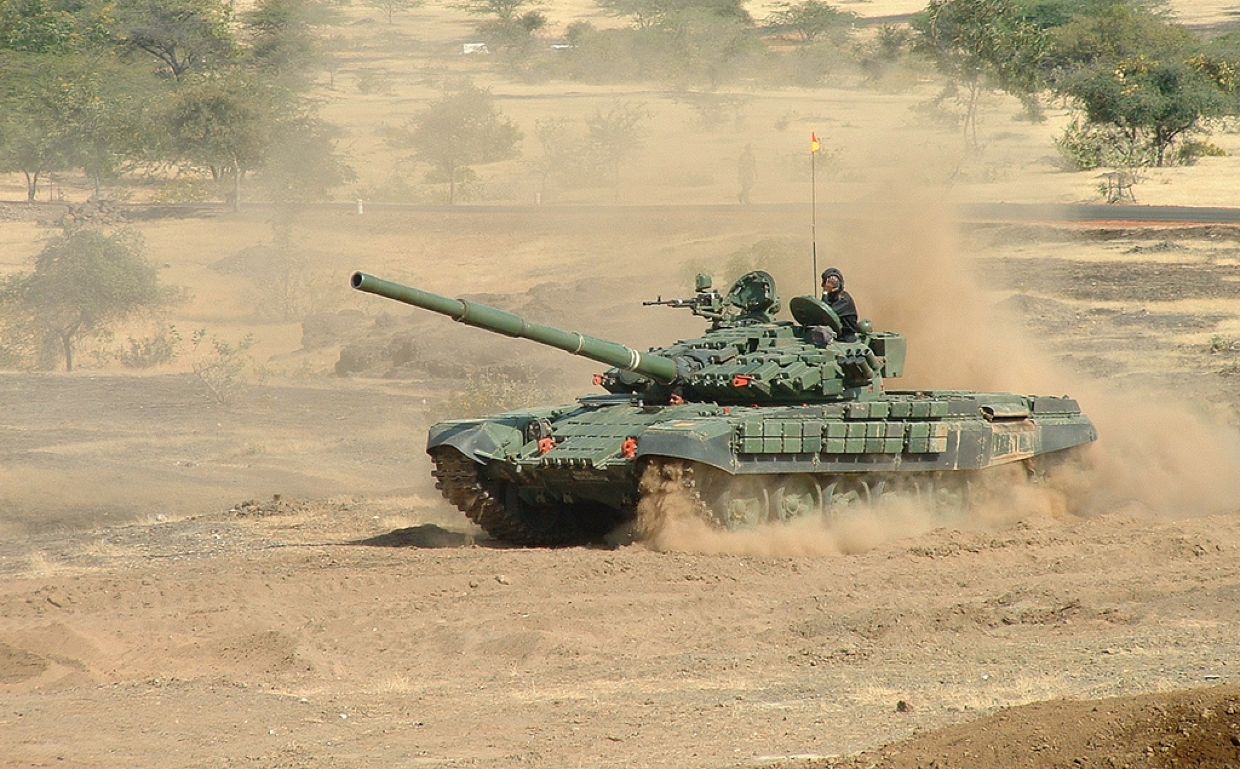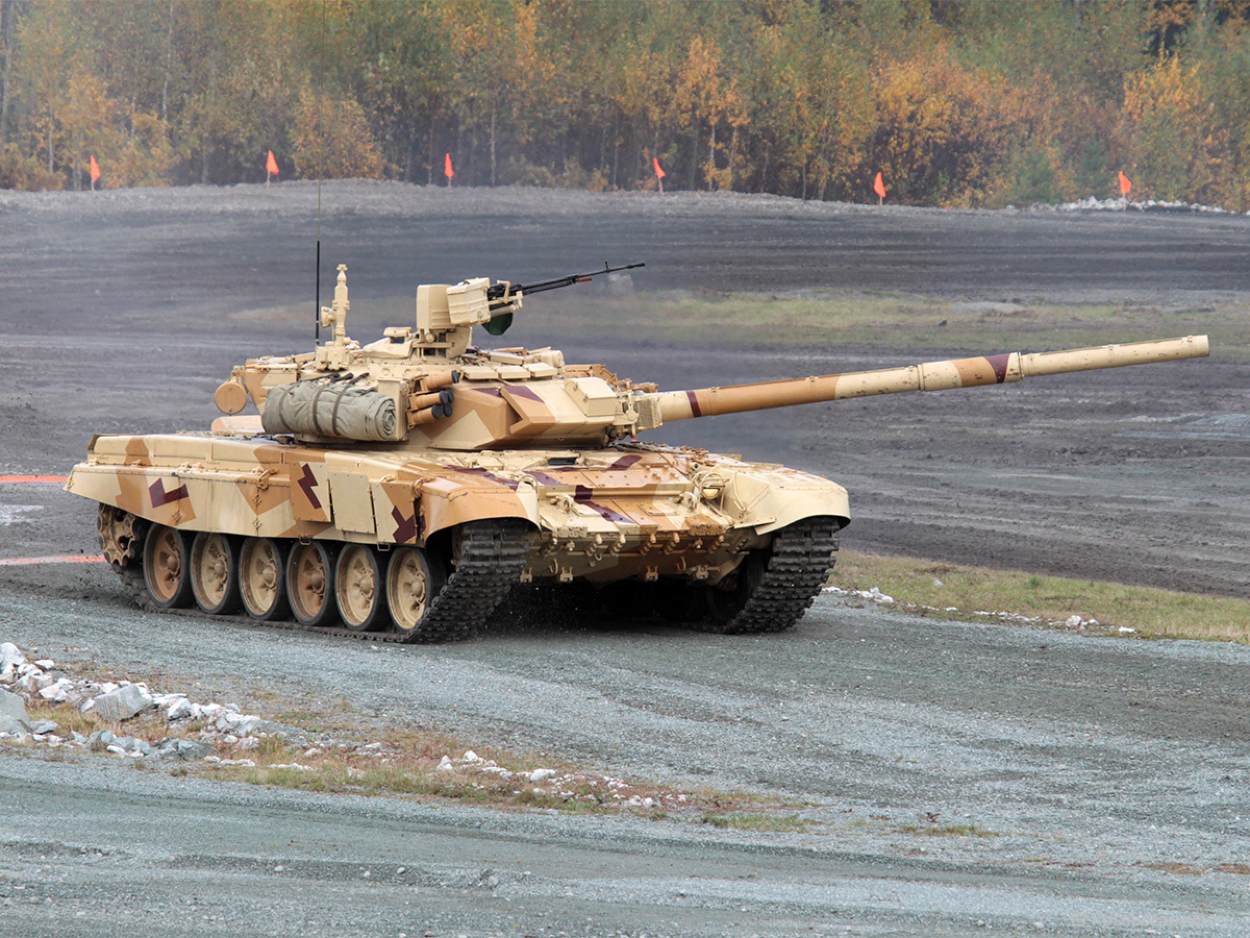India’s Larsen & Toubro (L&T) announced in a February 15, 2025 press release that it has signed a Memorandum of Understanding (MoU) with Israel’s Rafael Advanced Defense Systems during Aero India 2025. The partnership aims to jointly offer and locally manufacture the Trophy Active Protection System (APS) for Indian defense platforms.
According to Arun Ramchandani, Senior Vice President and Head of L&T Precision Engineering & Systems, the partnership will make available a customized variant of the latest version of the Trophy APS for both current and future combat platforms to be inducted into the Indian Armed Forces
Trophy APS
Rafael’s Trophy APS is designed to protect armored vehicles from a wide range of threats, including anti-tank guided missiles (ATGMs), rocket-propelled grenades (RPGs), drones, and top-attack missiles such as Javelin and NLAW.
The Trophy system features four ELTA EL/M-2133 F/G band radar antennas providing 360-degree coverage around the vehicle and electro-optical sensors for situational awareness and threat identification. It also includes passive and active countermeasures against different types of threats.
When a threat is detected, the system can respond using both soft kill and hard kill countermeasures. Soft-kill countermeasures include smoke grenade launchers or jamming systems to obscure the vehicle and disrupt enemy targeting.
However, Trophy is best known for its hard-kill countermeasures.
Trophy calculates the threat’s trajectory and deploys explosively formed projectiles (EFPs) or other countermeasures from rotating launchers to destroy the incoming projectile mid-air.
It features an automated reloading mechanism for multiple engagements and can distinguish between threats that will hit the vehicle and those that won’t, conserving countermeasures and minimizing collateral damage.
Recent Trophy APS Upgrade
When initially deployed on the Israeli Merkava Mk 4 tanks in 2011, the Trophy APS was not designed to counter drones and top attack missiles like the NLAW.
In October 2024, Rafael unveiled an upgraded version of the Trophy active protection system with a top-attack defense capability that plugged a vulnerability against drones and top-attack missiles.
Rafael claims a 90% effectiveness rate for Trophy.
Current Defensive Suites on Indian Tanks
According to publicly available information, India has 126 Arjun MK1 tanks, over 1,200 T-90S tanks, and about 2,400 T-72M tanks of various modifications in service.
All the tanks currently rely on passive defensive measures. No APS is currently fitted on either the T-90 or T-72 tanks in active service. Both rely on passive protection: Kontakt-5 explosive reactive armor (ERA), composite armor, and smoke screens.
The war in Ukraine has underscored the inadequacy of passive protection systems against drones and top-attack anti-tank guided missiles (ATGMs).

Indian tanks, which primarily rely on composite armor and explosive reactive armor (ERA), remain vulnerable to modern anti-tank weapons, particularly loitering munitions, precision-guided artillery shells, and next-generation ATGMs that strike from above.
The ongoing conflict has demonstrated that active protection systems (APS) are now essential for tank survivability on the modern battlefield.
RFI for APS
In April 2021, the Indian Ministry of Defence (MoD) issued an Expression of Interest (EOI) to procure 818 modular Active Protection Systems (APS) for its T-90S/SK main battle tanks (MBTs), aiming to enhance their survivability against modern anti-tank threats.
The APS was required to feature both hard-kill and soft-kill capabilities:
-
Soft-kill: The system needed to provide smoke discharge and infrared jamming effects, along with audio-visual warnings when the tank was lased or targeted.
-
Hard-kill: The system had to neutralize shaped-charge threats, including rocket-propelled grenades (RPGs), anti-tank guided missiles (ATGMs), and high-explosive anti-tank (HEAT) rounds fired from tank guns. The required effectiveness was 90% against ATGMs, RPGs, and rockets and 70% against incoming 125 mm HEAT rounds.
At the time, the threat posed by drones and top-attack ATGMs to armored vehicles was not fully recognized.
However, in response to lessons from the Ukraine war, the Indian Army has reportedly issued a fresh Request for Information (RFI), updating requirements to include hard-kill protection against top-attack missiles and drones, in addition to traditional anti-tank threats.
Indian Army T-90S Tanks
The Indian Army has T-90S and T-90SK variant tanks powered by V-84MS 4-stroke, liquid-cooled, multi-fuel V-12 diesel engines with a power output of 840 horsepower (hp) at 2,000 rpm.
The T-9OSK is the Commander’s version of the T-90S, with additional communication and navigation equipment. It differs in radio and navigation equipment and Ainet remote-detonation system for HEF rounds
The tanks feature 7-speed (4 forward, 2 reverse) mechanical transmission. They have a top speed of about 60 km/h on roads and 45 km/h off-road, with a range of approximately 550 km on internal fuel. The engine is reliable but considered underpowered for the tank’s weight (around 46-48 tons), especially in high-altitude areas like Ladakh.
Post 2010, some T-90S tanks were retrofitted with the more powerful V-92S2 V-12 engine with power out of 1,000 hp at 2,000 rpm during mid-life upgrades.

According to reports, the T-90S features a “three-tiered” protection system. The first tier is the composite armor in the turret. Indigenously manufactured T-90S use the DRDO-developed Kanchan composite armor instead of Russian composite armor.
The second tier is third-generation Kontakt-5 explosive reactive armor (ERA) bricks, which degrade the penetrating power of kinetic-energy APFSDS ammunition. These bricks give the turret a distinctive angled “clamshell” appearance. ERA bricks are also located on the turret roof to protect against attacks from above.
The third tier is a Shtora-1 countermeasures suite that includes two electro-optical/IR “dazzlers” on the front of the turret, four laser warning receivers, two 3D6 ‘smoke’ grenade discharging systems, and a computerized control system.
The Shtora has no hard-kill countermeasures. Russia has replaced it with Arena-M APS in the latest T-90M variant of the tank.
Trophy Competitors
The Israeli Trophy APS, developed by Rafael Advanced Defense Systems, is a leading contender in India’s APS procurement process.
Other systems under consideration include the Russian Arena-M and Afghanit systems:
-
Afghanit APS: Originally developed for Russia’s T-14 Armata, the system was designed before the Ukraine conflict and lacks counter-drone capability, necessitating upgrades to address modern threats.
-
Arena-M APS: A more advanced Russian system incorporating counter-drone and top-attack protection. Russia reportedly placed its first order for T-90M tanks equipped with Arena-M APS in August 2024. However, its full operational capability remains untested.
Additionally, India’s Defence Research and Development Organisation (DRDO) is developing an indigenous APS for the T-90. Fabrication is underway, with testing expected in late 2025 or early 2026.
Zorawar Tank
Variants of the Trophy APS are designed for lighter armored vehicles, allowing L&T to pitch the system for its Zorawar light tank.
Conclusion
There is little doubt about the urgency of acquiring APS systems with comprehensive countermeasures against the evolving threats faced by current and future MBTs.
Given the large number of tanks in the Indian Army, it would be prudent to pursue local manufacturing of a proven foreign APS, ensuring rapid deployment and self-sufficiency. At the same time, DRDO’s indigenous APS development should continue in parallel, providing a long-term, homegrown solution for India’s armored forces.
- Vijainder K Thakur is a retired IAF Jaguar pilot, author, software architect, entrepreneur, and military analyst.
- VIEWS PERSONAL OF THE AUTHOR
- Follow the author @vkthakur




